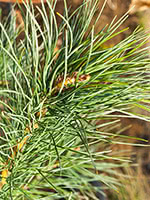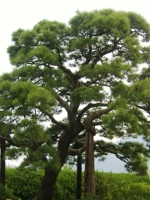Mon-Fri 9am - 5pm Mountain time
Western White Pine vs Japanese Black Pine
Pinus monticola
Pinus thunbergii
NOT AVAILABLE THIS SEASON - MIGHT RETURN
NOT AVAILABLE THIS SEASON - MIGHT RETURN
The Western White Pine is long-long lived conifer that featuring a narrow, open, conical crown of horizontal branches with blue-green needles. It is native to the Pacific Northwest in the mountain region. As a timber species the Western White Pine is highly valued. This evergreen is similar to the Eastern White Pine, but has stiffer needles, the growth is more dense, and it tends to have larger cones.
Japanese Black Pine is known for its unique and irregular growth habit, making it a striking landscape addition. It typically does not grow with a central leader. This causes it to form a flat-top, classic bonsai-like shape when mature. When it has a central leader, it will grow with a twisted trunk. Another striking feature is the white apical buds which contrast with the surrounding green needles.
The Japanese Black Pine is an excellent candidate for a bonsai tree and is frequently used by the bonsai community. It is found along the Japanese coast and is salt tolerant.

